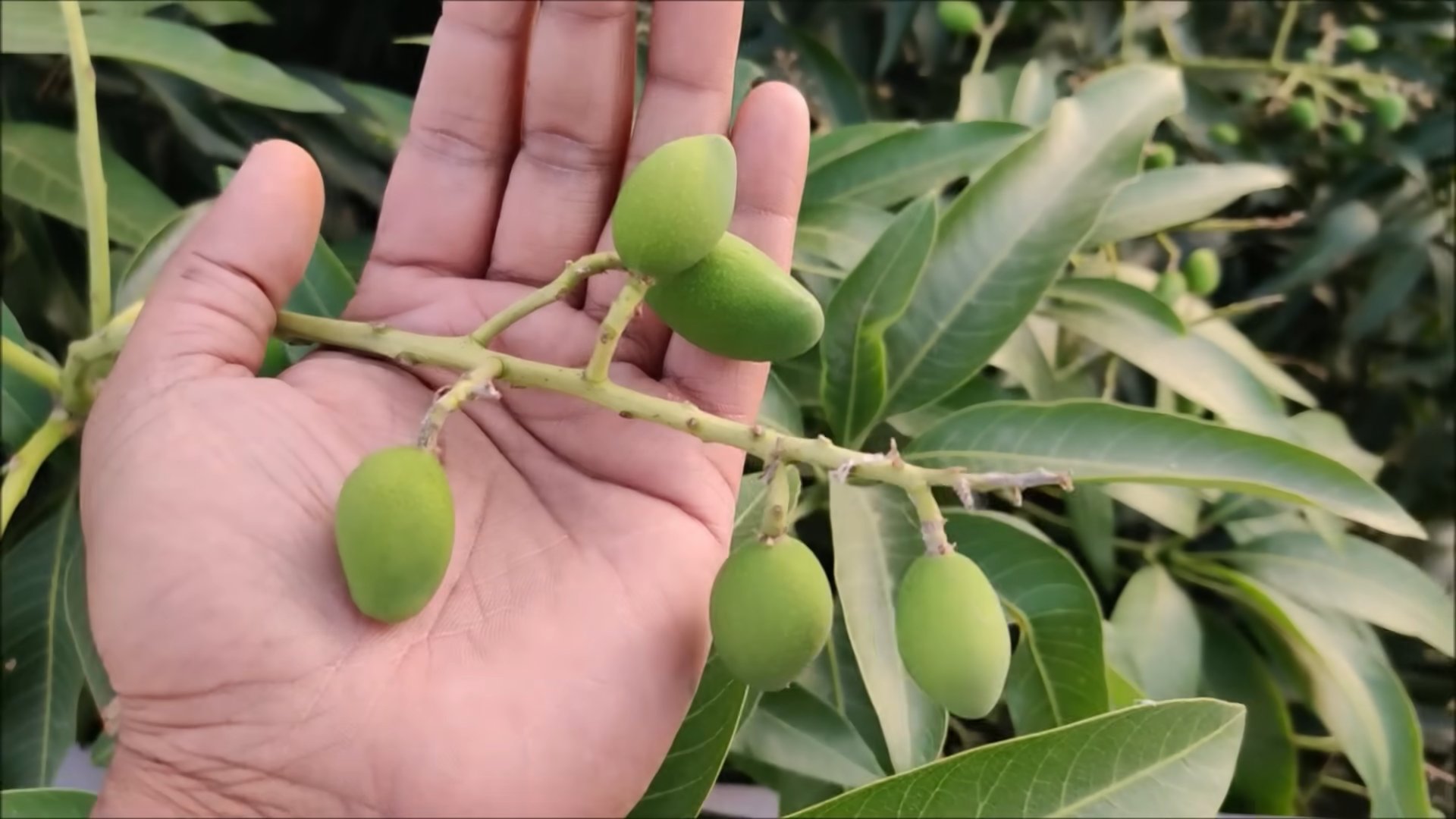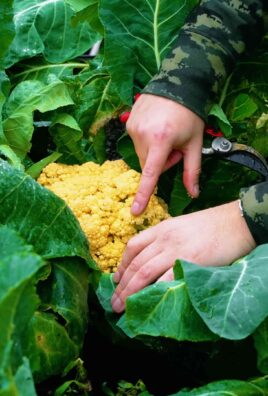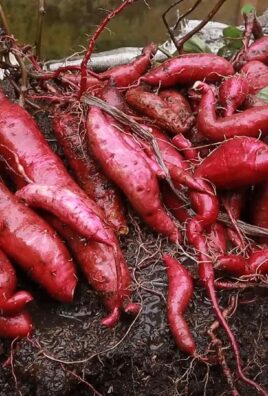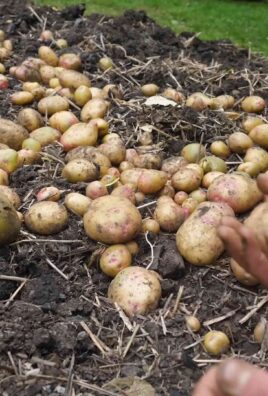Grow Mango Tree From Seed: Imagine biting into a juicy, sun-ripened mango, bursting with tropical flavor, and knowing you grew it yourself! Sounds like a dream, right? Well, it doesn’t have to be! This DIY guide will walk you through the surprisingly simple process of cultivating your very own mango tree from a single seed. Forget expensive nursery saplings; we’re going back to basics and embracing the magic of nature.
Mangoes have a rich history, deeply intertwined with cultures across South Asia for thousands of years. Revered for their delicious fruit and symbolic significance, mangoes represent prosperity, love, and even immortality in some traditions. Now, you can bring a piece of that history into your own backyard!
Why should you learn this DIY trick? Because store-bought mangoes, while delicious, often lack the intense flavor and satisfaction that comes from nurturing your own tree. Plus, it’s a fantastic way to connect with nature, learn about plant life cycles, and impress your friends with your green thumb. This guide will show you how to grow mango tree from seed, even if you’ve never gardened before. We’ll cover everything from seed selection to planting and care, ensuring you have all the knowledge you need to succeed. Let’s get started and embark on this exciting gardening adventure together!

Growing Your Own Mango Tree From Seed: A Tropical Adventure!
Hey there, fellow plant enthusiasts! Ever dreamt of biting into a juicy, homegrown mango? Well, guess what? You can actually grow your own mango tree from seed, right in your backyard (or even in a large pot indoors, depending on your climate!). It’s a bit of a journey, but trust me, the reward of harvesting your own delicious mangoes is totally worth it. Let’s dive into how to make this tropical dream a reality!
Choosing the Right Mango and Preparing the Seed
Okay, so the first step is all about picking the perfect mango. Not just any mango will do!
* Pick a Ripe and Delicious Mango: The best mangoes for seed germination are those that are fully ripe and have a flavor you absolutely love. Think about it – you’re essentially cloning this mango, so you want to start with the best possible genetics! Look for mangoes that are fragrant, slightly soft to the touch, and have vibrant color. Tommy Atkins mangoes are readily available, but if you can find a local variety known for its flavor, even better!
* Eat the Mango (The Best Part!): Enjoy that delicious mango! Savour every bite, because you’re about to embark on a mango-growing adventure. Make sure to remove as much of the flesh from the seed as possible.
* Clean the Seed Thoroughly: This is crucial. You need to get rid of all the remaining mango flesh clinging to the husk. Use a scrub brush and warm water to really clean it well. Any leftover flesh can attract mold and hinder germination.
* Drying the Seed (Optional, but Recommended): Some people skip this step, but I find it helps. Let the cleaned seed dry for a day or two in a well-ventilated area, away from direct sunlight. This helps prevent mold growth.
Cracking the Husk (The Tricky Part!)
This is where things get a little more involved. The mango seed is encased in a tough husk, and we need to get to the actual seed inside. Be careful, because you don’t want to damage the seed itself!
* Safety First! Wear gloves and eye protection. This process can be a little messy, and you don’t want to risk injury.
* Locate the Seam: Examine the mango husk carefully. You’ll notice a seam running along the edge. This is where the husk naturally splits open.
* Using a Knife (Carefully!): This is the most common method, but requires caution. Use a sharp knife (a butter knife can work, but a utility knife is better) to gently pry open the husk along the seam. Insert the knife tip into the seam and gently twist. You might need to work your way around the entire seam, little by little. Be extremely careful not to cut yourself or damage the seed inside.
* Alternative Method: Using Pliers or a Vice: Some people find it easier to use pliers or a vice to crack the husk. If you choose this method, wrap the husk in a cloth to prevent it from shattering. Gently apply pressure to the husk until it cracks open.
* Extract the Seed: Once the husk is cracked open, carefully remove the seed inside. It will look like a large bean. The seed should be plump and healthy-looking. Discard any seeds that are shriveled or discolored.
Germinating the Mango Seed
Now for the exciting part – getting that seed to sprout! There are a couple of ways to do this. I’ll share my preferred method, which I’ve found to be the most successful.
* The Paper Towel Method (My Favorite!): This method allows you to monitor the seed’s progress easily.
1. Dampen a Paper Towel: Moisten a paper towel with water. It should be damp, not soaking wet.
2. Wrap the Seed: Place the mango seed on the damp paper towel and fold the towel over it, completely enclosing the seed.
3. Place in a Plastic Bag: Put the wrapped seed in a resealable plastic bag. This will help retain moisture.
4. Warm Location: Place the bag in a warm location, such as on top of your refrigerator or near a sunny window (but not in direct sunlight). The ideal temperature is around 70-80°F (21-27°C).
5. Check Regularly: Check the seed every few days to make sure the paper towel is still damp. If it’s drying out, lightly mist it with water. Also, look for signs of germination – a small root emerging from the seed.
6. Patience is Key: Germination can take anywhere from 1 to 4 weeks, so don’t get discouraged if you don’t see results immediately.
* Directly Planting in Soil (Another Option): You can also plant the seed directly into a pot of well-draining potting mix.
1. Prepare the Pot: Fill a pot with a good quality potting mix. Make sure the pot has drainage holes.
2. Plant the Seed: Plant the mango seed horizontally, with about half of the seed buried in the soil.
3. Water Gently: Water the soil gently until it’s moist but not waterlogged.
4. Warm Location: Place the pot in a warm, sunny location.
5. Keep Soil Moist: Keep the soil consistently moist, but not soggy.
6. Wait Patiently: Germination can take several weeks.
Planting the Sprouted Seedling
Once your mango seed has sprouted and has a good root system (a few inches long), it’s time to plant it in a pot.
* Choose the Right Pot: Select a pot that’s at least 6 inches in diameter and has good drainage holes. Mango trees need room to grow, so you’ll eventually need to transplant it into a larger pot.
* Use Well-Draining Soil: Mango trees thrive in well-draining soil. A mix of potting soil, perlite, and sand is ideal.
* Carefully Remove the Seedling: Gently remove the sprouted seed from the paper towel (if you used that method) or carefully dig it up from the pot (if you planted it directly). Be careful not to damage the roots.
* Plant the Seedling: Dig a hole in the potting mix large enough to accommodate the roots. Place the seedling in the hole and gently backfill with soil. Make sure the top of the seed is just below the soil surface.
* Water Thoroughly: Water the seedling thoroughly after planting.
* Provide Sunlight: Place the pot in a sunny location that receives at least 6 hours of direct sunlight per day.
Caring for Your Mango Seedling
Now that your mango seedling is planted, it’s important to provide it with the right care to ensure it grows into a healthy tree.
* Watering: Water your mango seedling regularly, especially during the growing season (spring and summer). Allow the soil to dry out slightly between waterings. Avoid overwatering, as this can lead to root rot.
* Fertilizing: Fertilize your mango seedling every few weeks during the growing season with a balanced fertilizer. Follow the instructions on the fertilizer label.
* Pruning: Prune your mango seedling to encourage branching and a strong structure. Remove any dead or damaged branches.
* Pest and Disease Control: Keep an eye out for pests and diseases. Common mango pests include aphids, scale, and mealybugs. Treat infestations promptly with insecticidal soap or neem oil.
* Transplanting: As your mango tree grows, you’ll need to transplant it into larger pots. Eventually, if you live in a suitable climate (USDA zones 9-11), you can plant it in the ground.
Important Considerations
* Climate: Mango trees are tropical plants and thrive in warm climates. If you live in a colder climate, you can still grow a mango tree in a pot, but you’ll need to bring it indoors during the winter.
* Grafting: Mango trees grown from seed can take several years to produce fruit, and the fruit may not be the same quality as the parent mango. To ensure you get a tree that produces delicious fruit sooner, you can graft a branch from a known fruiting variety onto your seedling. Grafting is a more advanced technique, but it’s worth considering if you’re serious about growing mangoes.
* Patience: Growing a mango tree from seed takes time and patience. Don’t get discouraged if you don’t see results immediately. With proper care, you’ll eventually have a beautiful mango tree that produces delicious fruit.
So there you have it! Growing a mango tree from seed is a rewarding experience that allows you to connect with nature and enjoy the fruits (literally!) of your labor. Good luck, and happy growing!

Conclusion
So, there you have it! Growing a mango tree from seed isn’t just a fun project; it’s a rewarding journey that connects you to the natural world and provides the potential for delicious, homegrown fruit for years to come. While it requires patience and a little bit of effort, the satisfaction of nurturing a tiny seed into a thriving tree is unparalleled. Forget expensive nursery saplings – this DIY approach allows you to cultivate your own mango tree, perfectly adapted to your local environment, and all from a simple seed.
This method offers a unique opportunity to understand the life cycle of a plant and appreciate the miracle of growth. Plus, it’s an incredibly cost-effective way to add a touch of the tropics to your garden or even your indoor space (with proper care and pruning, of course!). Think of the bragging rights when you can say, “I grew this mango tree from seed!”
But the benefits extend beyond just the personal satisfaction. By starting from seed, you’re also contributing to biodiversity and potentially cultivating a more resilient tree. Seedlings often develop stronger root systems than grafted plants, making them better equipped to withstand environmental challenges.
Don’t be afraid to experiment with different mango varieties! Try growing seeds from different mangoes you enjoy eating. You might discover a new favorite or even create your own unique hybrid. Consider the size and growth habit of the mature tree when choosing your variety, especially if you plan to grow it in a container.
For those living in colder climates, growing a mango tree in a large pot is a fantastic option. This allows you to bring the tree indoors during the winter months, protecting it from frost and freezing temperatures. Remember to provide ample sunlight and well-draining soil, and don’t overwater.
And speaking of variations, you can also explore different grafting techniques once your seedling has matured. Grafting allows you to combine the desirable traits of different mango varieties, such as disease resistance or fruit quality. This is a more advanced technique, but it can significantly improve the overall performance of your mango tree.
Ultimately, the key to success lies in providing your mango seedling with the right conditions: plenty of sunlight, well-draining soil, and consistent moisture. Be patient, observe your tree closely, and adjust your care as needed.
We wholeheartedly encourage you to embark on this exciting adventure of growing a mango tree from seed. It’s a project that’s both educational and fulfilling, and it has the potential to bring you years of enjoyment. And most importantly, don’t forget to share your experiences with us! We’d love to hear about your successes, challenges, and any tips you’ve learned along the way. Share your photos and stories in the comments below – let’s create a community of mango-growing enthusiasts! This DIY project is not just about growing a tree; it’s about cultivating a connection with nature and sharing the joy of gardening with others. So, grab a mango seed, get your hands dirty, and let the adventure begin!
Frequently Asked Questions (FAQ)
1. What type of mango seed is best for growing a tree?
The best mango seed to use is one from a mature, ripe mango that you enjoyed eating. The fresher the seed, the higher the chances of germination. Polyembryonic mango varieties (those that produce multiple seedlings from a single seed) are generally preferred because they are more likely to produce a tree that is true to the parent variety. Some common polyembryonic varieties include Tommy Atkins, Haden, and Kent. However, even monoembryonic varieties (those that produce only one seedling) can be successfully grown, although the resulting tree may not be identical to the parent.
2. How long does it take for a mango seed to germinate?
Germination time can vary depending on the variety, freshness of the seed, and environmental conditions. Generally, it takes anywhere from 1 to 4 weeks for a mango seed to germinate. Providing consistent warmth and moisture will help speed up the process. Soaking the seed in water for 24 hours before planting can also improve germination rates.
3. What kind of soil is best for growing a mango tree from seed?
Mango trees thrive in well-draining soil that is rich in organic matter. A mixture of potting soil, compost, and perlite or vermiculite is ideal. The soil should be slightly acidic to neutral, with a pH between 6.0 and 7.0. Avoid heavy clay soils, as they can retain too much moisture and lead to root rot.
4. How much sunlight does a mango seedling need?
Mango seedlings need plenty of sunlight to thrive. Aim for at least 6-8 hours of direct sunlight per day. If you’re growing your seedling indoors, place it near a sunny window or supplement with a grow light. Insufficient sunlight can lead to weak, leggy growth.
5. How often should I water my mango seedling?
Water your mango seedling regularly, keeping the soil consistently moist but not waterlogged. Allow the top inch of soil to dry out slightly between waterings. Overwatering can lead to root rot, while underwatering can stunt growth. Adjust your watering frequency based on the weather and the moisture content of the soil.
6. When should I transplant my mango seedling?
Once your mango seedling has developed several sets of true leaves and its root system has filled the container, it’s time to transplant it into a larger pot or directly into the ground (if you live in a suitable climate). Choose a pot that is at least twice the size of the original container. When transplanting, be careful not to damage the roots.
7. Can I grow a mango tree from seed in a container?
Yes, you can successfully grow a mango tree from seed in a container, especially if you live in a colder climate where outdoor growing is not possible year-round. Choose a large container with drainage holes and use a well-draining potting mix. Be prepared to repot the tree as it grows, and provide regular fertilization. Container-grown mango trees may require more frequent watering and pruning than those grown in the ground.
8. How long does it take for a mango tree grown from seed to produce fruit?
Mango trees grown from seed typically take 5-8 years to produce fruit. This is longer than grafted trees, which can start producing fruit in 3-5 years. However, the wait is worth it when you finally get to harvest your own homegrown mangoes. Grafting a branch from a known fruiting tree onto your seedling can significantly reduce the time to fruiting.
9. What are some common problems when growing mango trees from seed?
Some common problems include root rot (due to overwatering), fungal diseases (especially in humid climates), and pest infestations (such as aphids, scale, and mealybugs). Proper watering, good air circulation, and regular inspection of your tree can help prevent these problems. Use organic pest control methods if necessary.
10. How can I encourage my mango tree to fruit?
To encourage your mango tree to fruit, provide it with optimal growing conditions, including plenty of sunlight, well-draining soil, and regular fertilization. Pruning can also help promote fruiting by encouraging new growth. In some cases, you may need to induce flowering by withholding water for a period of time (stressing the tree). However, this should only be done with caution and under the guidance of an experienced grower.
11. Is growing a mango tree from seed a reliable way to get the same fruit as the parent tree?
Not necessarily. Mango trees grown from seed may not produce fruit that is identical to the parent tree, especially if the parent tree was a hybrid variety. This is because the seed contains a mix of genetic material from both parent trees. However, polyembryonic mango varieties are more likely to produce trees that are true to the parent variety. Grafting is the most reliable way to ensure that you get the same fruit as the parent tree.
12. What kind of fertilizer should I use for my mango tree?
Use a balanced fertilizer that is specifically formulated for fruit trees. Look for a fertilizer with a ratio of 10-10-10 or 14-14-14. Apply the fertilizer according to the package instructions, typically in the spring and summer months. Avoid over-fertilizing, as this can damage the tree. You can also supplement with organic fertilizers such as compost and manure.





Leave a Comment